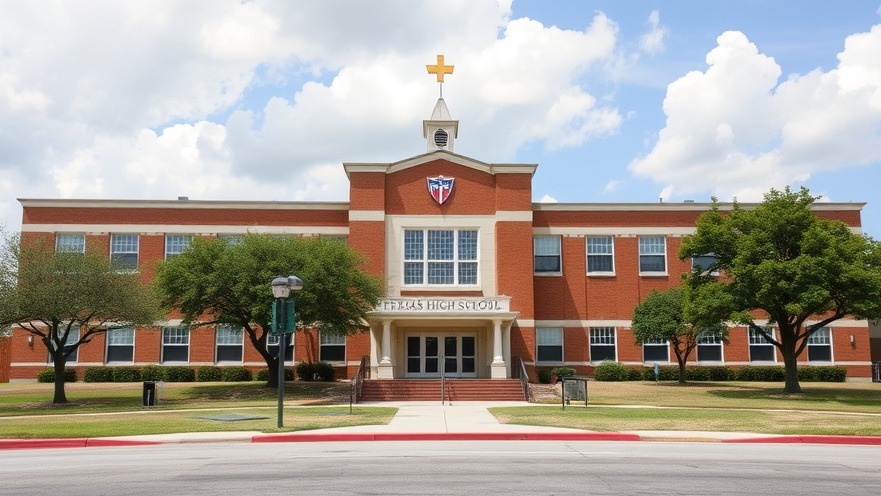
A Major Shift in Texas Education Policy
The recent passage of Senate Bill 2, paving the way for a statewide private school voucher program, signifies a monumental shift in Texas education policy. Set to launch in the 2026-27 school year, this program will allow families to allocate taxpayer dollars, totaling $1 billion over two years, towards private school tuition and other educational expenses. This change is not just about schooling; it’s about reshaping the landscape of education in Texas.
Understanding the Private School Voucher System
This new legislation introduces education savings accounts, which can be used by families for private school tuition, textbooks, transportation, and therapy services. Notably, the program could funnel up to 20% of funds to wealthier families, igniting a debate about equity in the education system. As critics point out, the partial funding for higher-income households could detract from public school resources, raising concerns over the accountability and impact on public education.
Public Response and Political Reactions
As the Texas Senate voted on this contentious bill, tensions peaked, revealing the divided opinions within the state. Senate Democrats raised alarms about the exclusion of undocumented Texans, emphasizing that public funding shouldn't diminish the quality of education available to all children. Critics like Senator Molly Cook have made passionate appeals against the policy, underscoring a fear that wealthier families could leverage the system for their own benefit. Governor Greg Abbott, affirming his commitment to sign the bill, stated his belief that this initiative represents parental choice and the right to pursue what’s best for one's children. Yet, amidst this debate, there's a yearning among some constituents for a more direct democratic process—namely, a statewide ballot to decide on such significant policy changes.
The Path Forward: Implications for Texas Schools
What does this mean for Texas education? Supporters of the voucher program argue that it encourages competition and innovation in education, ultimately benefiting students. The underlying sentiment seems to be that parents deserve the autonomy to choose the best educational environment for their children, tailored to their unique needs and situations. However, the fear remains that funding can be dangerously diverted from public schools, which serve the majority of Texas students.
Future Predictions: The Evolution of School Policy
As the program approaches its implementation date, one must consider its long-term implications. It poses questions on how it could reshape public school funding, educational quality, and parental satisfaction across Texas. Will this lead to enhanced opportunities for students in private institutions or will it destabilize the already fraught public education system? The reality of such a profound change will unfold over subsequent years and will undoubtedly influence future discussions on school funding and reform.
Building a Collaborative Educational Framework
The situation makes a strong case for dialogue among stakeholders in Texas education—parents, educators, and lawmakers alike. Collaborative efforts can be crucial in ensuring that private education does not come at the expense of public schooling, fostering a system where all children can thrive. This is particularly relevant for urban areas such as Austin and Houston, where educational disparities are often most pronounced.
Conclusion: What’s at Stake for Texas Families?
In light of the new development concerning private school vouchers, Texas families stand at a crucial juncture. This initiative promises personalized educational pathways but carries with it the complexity of potential inequities. With many debates yet to unfold, the upcoming years will be pivotal for ensuring that all children across Texas, regardless of their socioeconomic status, have access to quality education. As we foresee these changes, it’s vital for readers to stay informed and engaged with local discussions regarding the evolving landscape of education in Texas.
 Add Element
Add Element  Add Row
Add Row 



Write A Comment